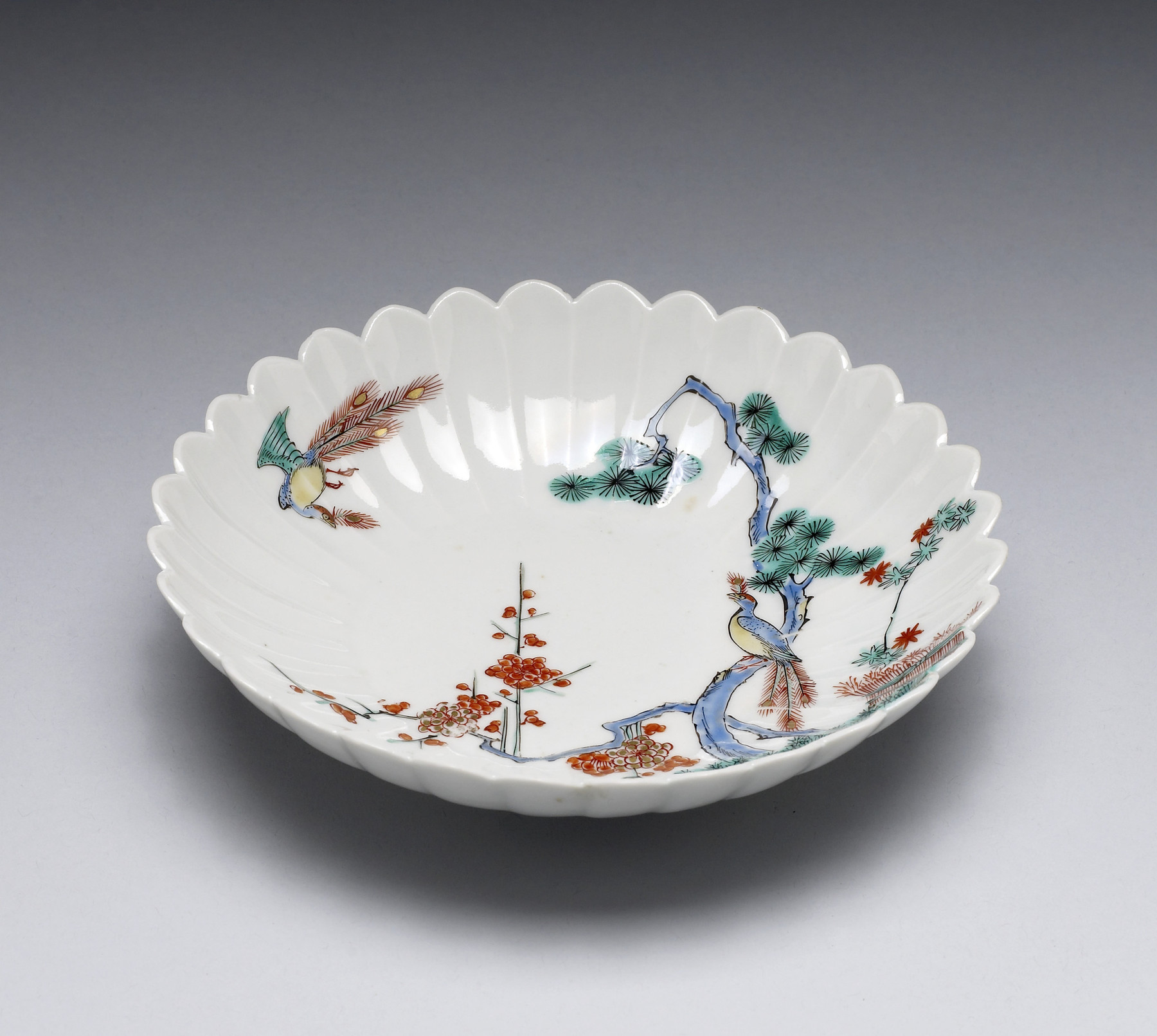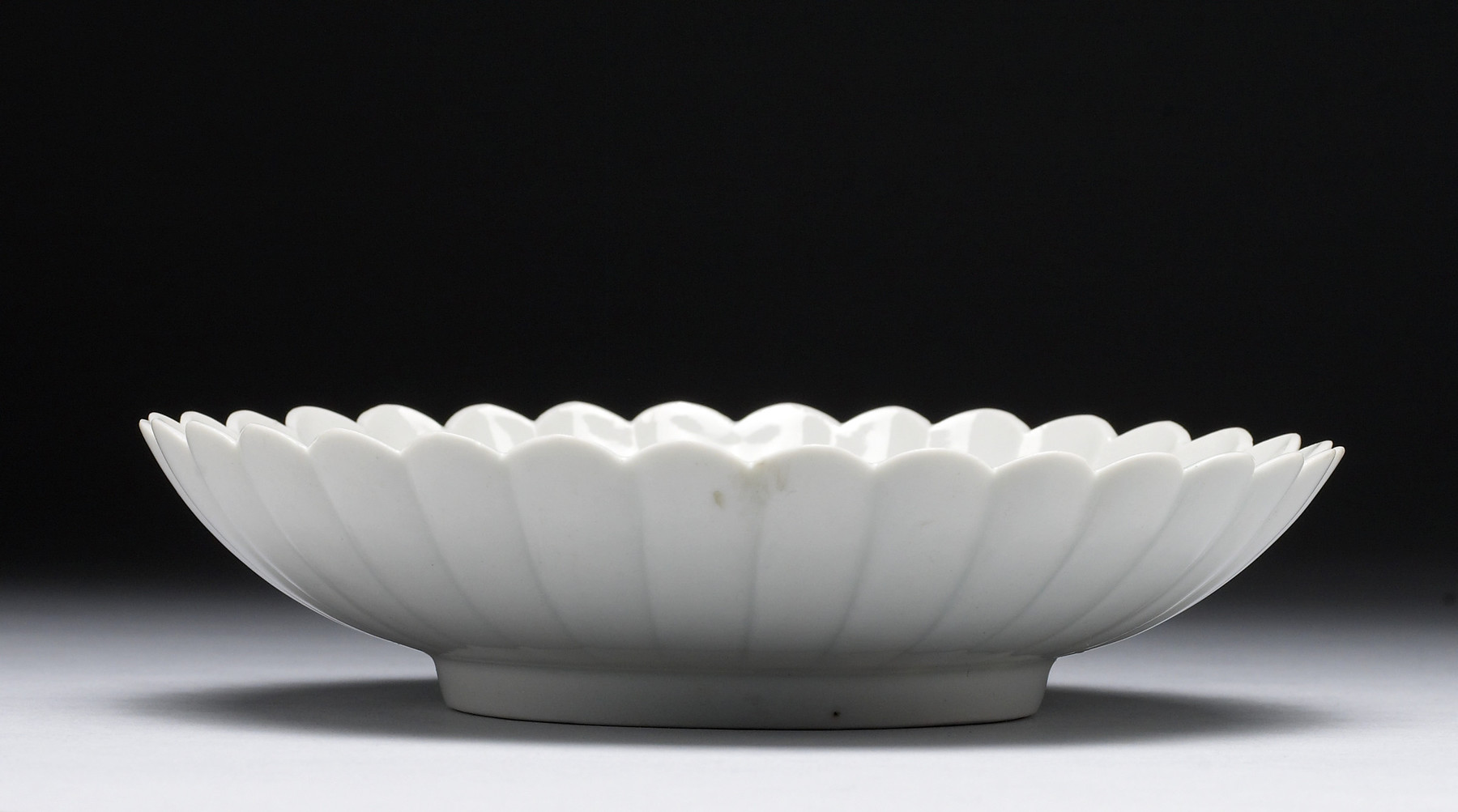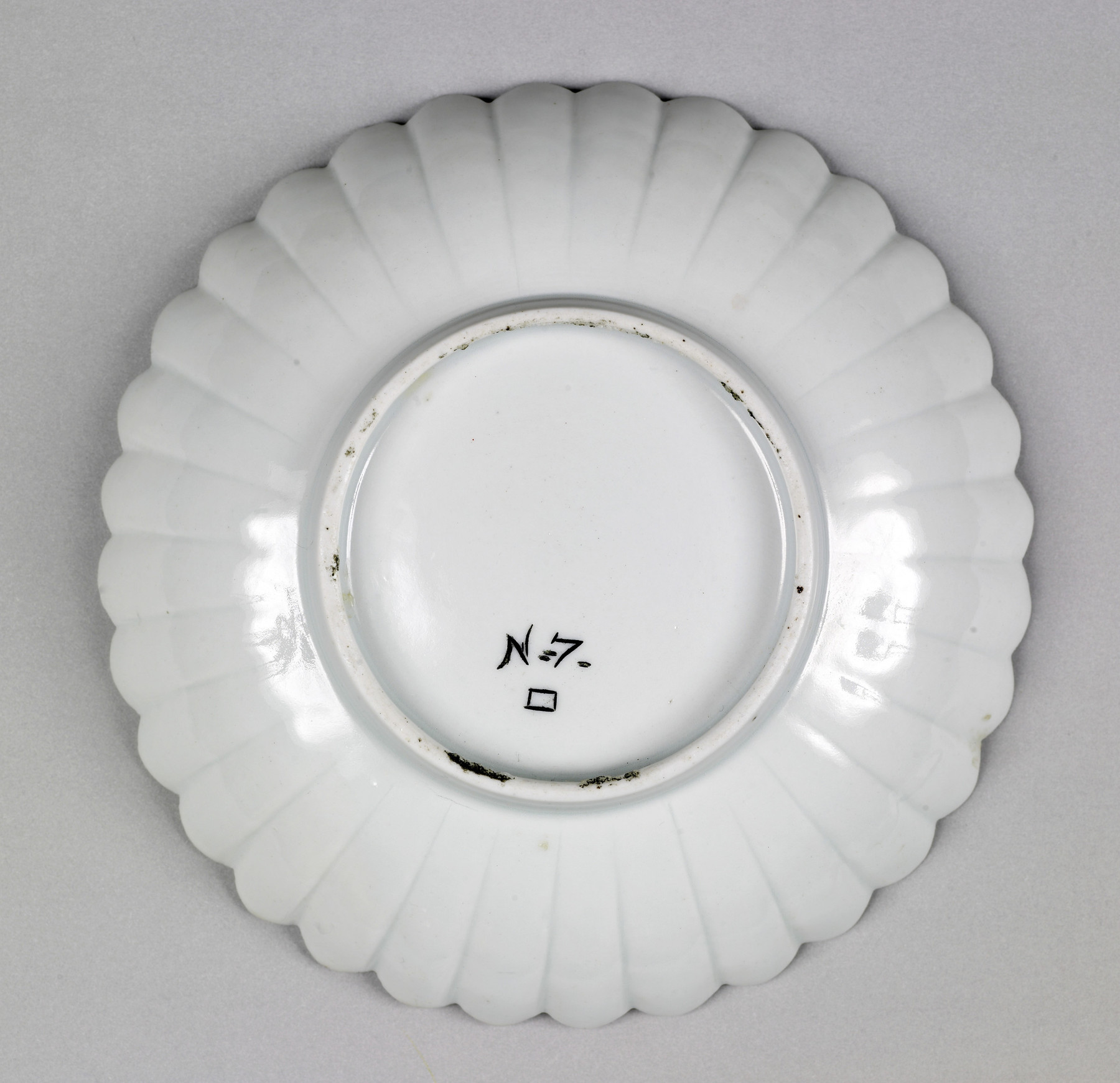Dish with Design of Birds on Pine and Plum Trees
Porcelain was first produced in the Arita kilns, Hizen Province, Japan, in the early 17th century. According to tradition, the technique of decorating porcelain with overglaze enamels was revealed to Sakaida Kakiemon, the earliest member of a family of potters, by a Chinese official in 1646.
Characteristic of the wares associated with the Kakiemon family is this dish with its plum tree, banded hedge, floral and "hoho" bird decorations in brialliant red, green and blue enamels.
Such wares were exported to Europe from about 1670-1690 by the Dutch East India Company.
On the reverse of this dish is incised "N 7" with a rectangle, the mark for Japanese wares in the collection of Frederick Augustus I (1690-1733), Elector of Saxony and King of Poland.
Inscription
Provenance
Provenance (from the French provenir, 'to come from/forth') is the chronology of the ownership, custody, or location of a historical object. Learn more about provenance at the Walters.
Collection of Frederick Augustus I [1690-1733], Elector of Saxony and King of Poland (?). Acquired by William T. or Henry Walters, Baltimore; by bequest to Walters Art Museum, 1931.
Geographies
Japan, Arita (Place of Origin)
Measurements
H: 1 1/2 × Diam: 6 3/8 in. (3.8 × 16.2 cm)
Credit Line
Acquired by William T. or Henry Walters, before 1931
Accession Number
In libraries, galleries, museums, and archives, an accession number is a unique identifier assigned to each object in the collection.
In libraries, galleries, museums, and archives, an accession number is a unique identifier assigned to each object in the collection.
49.1284








